Measurement results Intel
Let us first consider the temperature development at the individual watt stages of the power dissipation, i.e. what has to be emitted in heat energy and thus also cooled away. This ranges from 36 to 37 °C at 95 watts to 66 to 67 °C at 245 watts, whereby of course the fan speeds also play a role here. I use an optimized fan curve on the motherboard, but it is very similar to the original one from the Aorus BIOS. I just raised the minimum speeds around 50 °C a little bit to smooth the annoying temperature jumps. It is very nice to see that this has been achieved quite well in the 30-watt gradation. I will continue to use this setting for all comparative measurements in the future.
Let us now turn to noise. No matter how you set the coordinate origin, the descent of the curves for fan speeds and noise levels as such is almost linear. Artificial, because I had optimized the fan curve extra, so now a good inference can be drawn about the volume (the noise emission). However, it also shows that the fans used belong to the better grade, although not to the absolute upper class. But they do what they are supposed to do, really neat and solid. The sound characteristic is a rather uniform, unobtrusive and broadband noise, which can also be insulated quite well. The pump is even so quiet that it doesn't matter here, even at 95 Watts TDP!
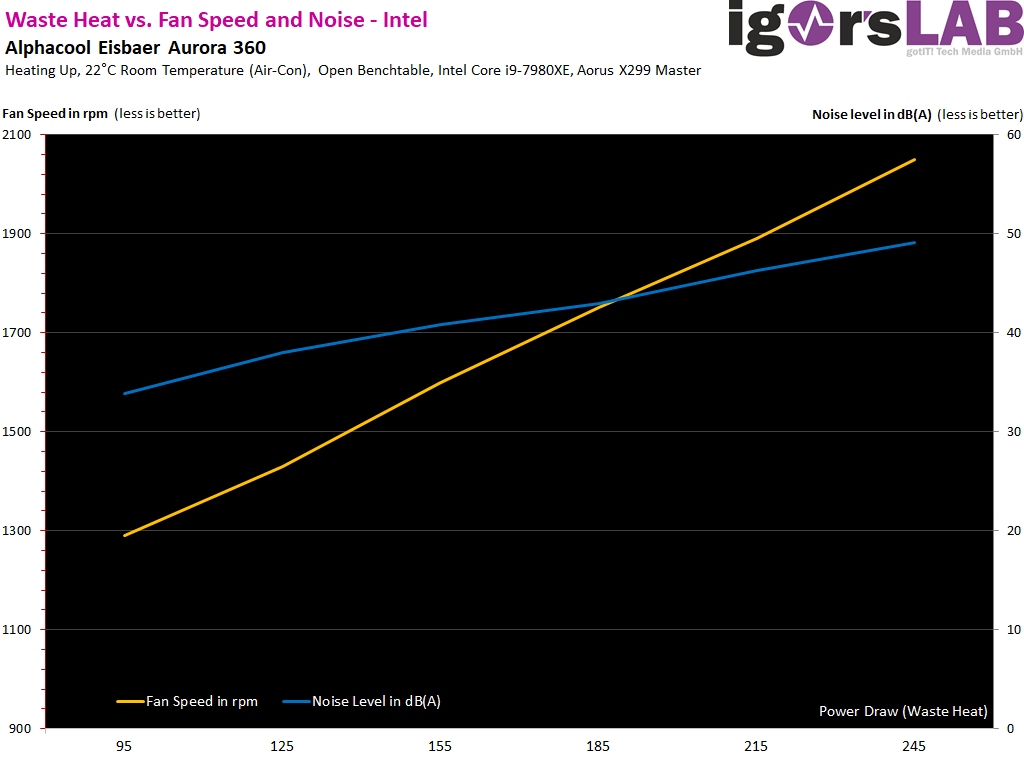 If you put the delta between the (for me) constant room temperature and the CPU temperature at speed X, then you can see very well how strong the fan speeds for your own case (e.g. maximum of 125 watts) to stay in the temperature window. This finding applies to almost all CPUs with socket1150, 1151, 2011 and 2066 (Intel), as well as the CPUs in the socket AM2 to AM3+ as well as the first and second Ryzen generation. For the Ryzen 3xxx in 7 nm, however, one has to start anew, because due to the high heat flux density generally different rules apply.
If you put the delta between the (for me) constant room temperature and the CPU temperature at speed X, then you can see very well how strong the fan speeds for your own case (e.g. maximum of 125 watts) to stay in the temperature window. This finding applies to almost all CPUs with socket1150, 1151, 2011 and 2066 (Intel), as well as the CPUs in the socket AM2 to AM3+ as well as the first and second Ryzen generation. For the Ryzen 3xxx in 7 nm, however, one has to start anew, because due to the high heat flux density generally different rules apply.
Measurement results Ryzen 9 3900X
I don't want to prejudge my article on the experiments to cool the third generation Ryzen CPUs, but it didn't make any difference at full load, whether I was here with a Be Quiet Dark Rock Pro 4, a Corsair A500 (both air), or the polar bear Aurora 360 tested. Above a certain fan speed, the limit of the cooling performance was not only the same, but also the values of the individual power levels were always largely identical within the scope of measuring tolerances!
If we look at the watt levels, we will see that the 185 watts can no longer be cooled. But none of the other coolers, which have to release the waste heat directly to the air, can do this, but only the chiller, which virtually eliminates the heat resistance of the air. But the chiller is not for testing. The CPU throttles to exactly 170 watts and then keeps the temperatures constant at approx. 85 °C, but this was not the task.
Let's look again at the noise and fan speeds. The buckling in both curves shows where the CPU limit begins. Even test-mounted fans with 2400 rpm and more throughput have nothing to change the fact of the limitation and its timing of insertion:
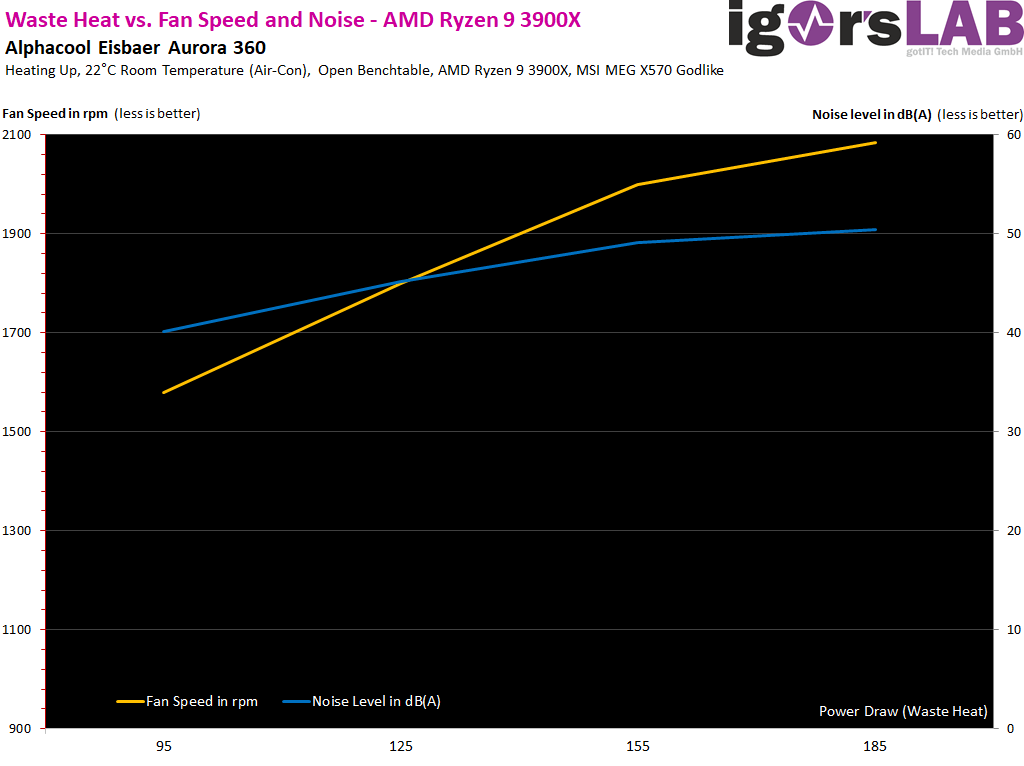 Now, of course, these high losses do not occur in everyday life. With up to 125 watts you should be on the safe side in any case. Then there is a room temperature between my 22 °C and the approx. 66 °C still a delta of almost 20 degrees, from which one can be 10 degrees for the summer and approx. 32 °C room temperature. The rest could be used to optimize the fan curve.
Now, of course, these high losses do not occur in everyday life. With up to 125 watts you should be on the safe side in any case. Then there is a room temperature between my 22 °C and the approx. 66 °C still a delta of almost 20 degrees, from which one can be 10 degrees for the summer and approx. 32 °C room temperature. The rest could be used to optimize the fan curve.
I already wrote that from a certain cooling capacity it almost doesn't matter how much the fans still rotate from a certain value. In test mode with 125 watts, the system was still stable at 1200 rpm and the temperature window up to the throttling would have been sufficient even for a Mediterranean high summer without a climate box. Incidentally, the rotation of the cooler hardly played a role here, because if you look at the plate, the surface directly contacted by the water is roughly the same in all directions. By the way, you can also see how the surface has changed from the drawing:















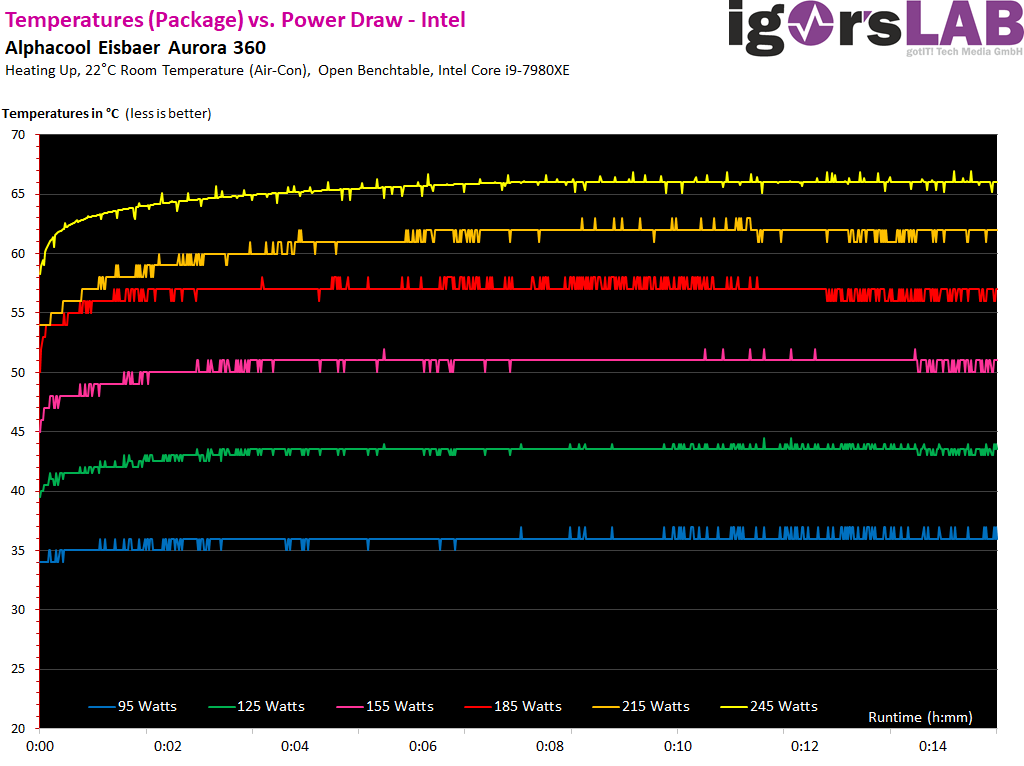

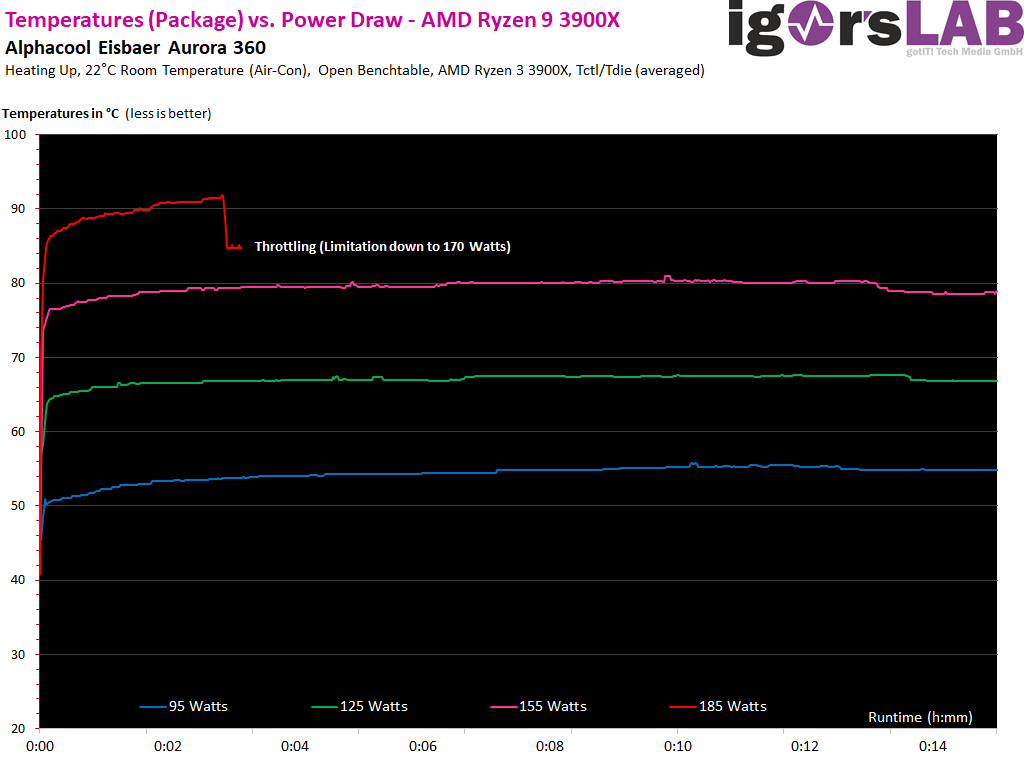
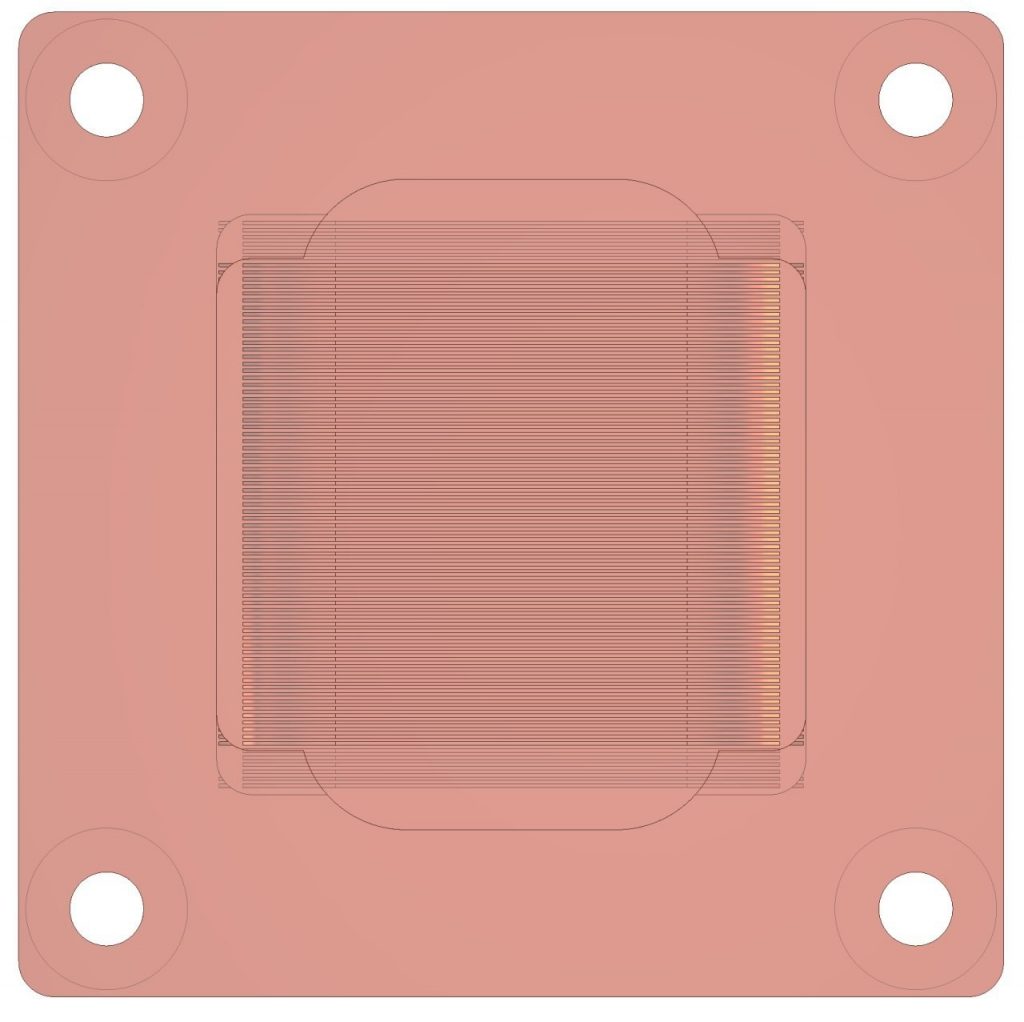


















Kommentieren